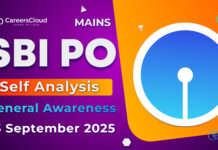Dear Readers & Aspirants, We collected Modi Schemes in Banking & Insurance and make it in PDF format. We Hope it will definitely help you for your upcoming Exams. All the Best My Dear Aspirants & Readers.
- Modi Schemes: Agriculture & Irrigation – Part 2 PDF
- Modi Schemes: Technology Part 3 PDF
- Modi Schemes: Environmental and Health Part 4 PDF
- Modi Schemes: child and Women Empowerment Part 5 PDF
A.Pradham mantri jan dhan yojana
Scheme Details
- Pradhan Mantri Jan-Dhan Yojana (PMJDY) is National Mission for Financial Inclusion to ensure access to financial services, namely, Banking/ Savings & Deposit Accounts, Remittance, Credit, Insurance, Pension in an affordable manner.
- Account can be opened in any bank branch or Business Correspondent (Bank Mitr) outlet. PMJDY accounts are being opened with Zero balance. However, if the account-holder wishes to get cheque book, he/she will have to fulfill minimum balance criteria.
Special Benefits under PMJDY Scheme
- Interest on deposit.
- Accidental insurance cover of Rs.1.00 lac
- No minimum balance required.
- Life insurance cover of Rs.30,000/-
- Easy Transfer of money across India
- Beneficiaries of Government Schemes will get Direct Benefit Transfer in these accounts.
- After satisfactory operation of the account for 6 months, an overdraft facility will be permitted
- Access to Pension, insurance products.
- Accidental Insurance Cover, RuPay Debit Card must be used at least once in 45 days.
- Overdraft facility upto Rs.5000/- is available in only one account per household, preferably lady of the household.
Documents required to open an account under Pradhan Mantri Jan-Dhan Yojana
If Aadhaar Card is not available, then any one of the following Officially Valid Documents (OVD) is required: Voter ID Card, Driving License, PAN Card, Passport & NREGA Card. If these documents also contain your address, it can serve both as Proof of Identity and Address
HIGHLIGHTS
*scheme for comprehensive financial inclusion launched by the Prime Minister of India, Narendra Modi on 28 August 2014
*Run by Department of Financial Services, Ministry of Finance
*inauguration day, 1.5 Crore bank accounts were opened under this scheme
*By 28 January 2015, 12.58 crore accounts were opened, with around ₹10590 crore
B.Sukhanya samridi account
Sukanya Samriddhi Account is another welcome step from Govt of India. Honorable Prime Minister of India, Sh. Narendra Modi Ji launched Sukanya Samriddhi Account “A Small Savings Scheme” on 22nd January, 2015. It is part of “Beti Bachao – Beti Padhao” initiative of Government of India (GOI) also known as BBB
OBJECTIVE_
Sukanya Samriddhi Account, Govt is trying to give a social message that Girl Child is not a financial burden if parents of a Girl child secure their future through proper financial planning.
7 Benefits_
1.Highest Interest Rate among all Small Savings Schemes offered by Govt of India_
Sukanya Samriddhi Account will offer interest rate of 9.1% for current financial year i.e. FY 2014-15. It is highest among all Small Savings Schemes.
- Tax Savings_
In order to encourage people to open Sukanya Samriddhi Account, Govt has exempted contribution to this account u/s 80C of the Income Tax Act, 1961.
- Lock-in Period_
In my opinion this is the BEST Feature of this scheme. The maturity of account is 21 years from the date of opening of the account or Marriage of the Girl Child, Which ever is earlier. For Marriage, Girl should be of 18 years at the time of marriage. The operation of account is not permitted beyond date of marriage.
- Purpose of Sukanya Samriddhi Account_
As i mentioned earlier, it is quite evident that Sukanya Samriddhi Account is launched with sole objective of financial planning for the marriage of Girl Child. Social Message is that Marriage or Education of a Girl Child is not a financial burden if parents plan well in advance.
- Maturity Proceeds to be Paid to Girl Child
On maturity of Sukanya Samriddhi Account, the account balance along with accrued interest will be paid directly to the account holder i.e. Girl Child. It gives financial independence to Girl child which is currently missing in India.
- Interest to be paid even after Maturity
Unlike other financial schemes where interest is not paid after maturity of the deposit / investment scheme. Unique feature of Sukanya Samriddhi Account is that even after maturity, if the account is not closed by the account holder, Interest shall be payable in the account till final closure of the account.
- Flexibility to operate Sukanya Samriddhi Account
Based on past experience, Government of India has given lot of flexibility in terms of account operations. I am listing down few of them
(a) Account can be opened with initial deposit of Rs 1000 and thereafter any amount in multiple of Rs 100 can be deposited subject to max limit of 1.5 lakh during financial year. Every FY, a min sum of Rs 1000 should be deposited to keep account operative.
(b) On attaining age of 10 years, a girl child can operate her account
(c) Account can be closed if it is proved that account is causing undue hardship to the account holder
(d) Account can be transferred anywhere in India
C.MUDRA Bank Yojana
1.BUDGET SPEECH_
The Prime Minister Narendra Modi launched the promised Micro Units Development and Refinance Agency Ltd (MUDRA) Bank on 8 April, 2015 with a corpus of Rs 20,000 crore and a credit guarantee corpus of Rs 3,000 crore. The launch was the fulfillment of an announcement made earlier by the Finance Minister Arun Jaitley in his FY 15-16 Budget speech
2.MUDRA Bank Make a Difference to the Economy
As per NSSO Survey of 2013, there are close to 5.77 crore small-scale business units, mostly sole proprietorships, which undertake trading, manufacturing, retail and other small-scale activities. Compare this with the organised sector and larger companies that employ 1.25 crore individuals. Clearly, the potential to harness and nurture these micro businesses is vast and the government recognises this. Today, this segment is unregulated and without financial support or cover from the organised financial banking system.
3.The principal objectives of the MUDRA Bank are_
- Regulate the lender and the borrower of microfinance and bring stability to the microfinance system through regulation and inclusive participation.
- Extend finance and credit support to Microfinance Institutions (MFI) and agencies that lend money to small businesses, retailers, self-help groups and individuals.
- Register all MFIs and introduce a system of performance rating and accreditation for the first time. This will help last-mile borrowers of finance to evaluate and approach the MFI that meets their requirement best and whose past record is most satisfactory. This will also introduce an element of competitiveness among the MFIs. The ultimate beneficiary will be the borrower.
- Provide structured guidelines for the borrowers to follow to avoid failure of business or take corrective steps in time. MUDRA will help in laying down guidelines or acceptable procedures to be followed by the lenders to recover money in cases of default.
- Develop the standardised covenants that will form the backbone of the last-mile business in future.
- Offer a Credit Guarantee scheme for providing guarantees to loans being offered to micro businesses.
- Introduce appropriate technologies to assist in the process of efficient lending, borrowing and monitoring of distributed capital.
- Build a suitable framework under the Pradhan Mantri MUDRA Yojana for developing an efficient last-mile credit delivery system to small and micro businesses.
4.Major Product Offerings
MUDRA Bank has rightly classified the borrowers into three segments: the starters, the mid-stage finance seekers and the next level growth seekers.
To address the three segments, MUDRA Bank has launched three loan instruments:
Shishu: covers loans upto Rs 50,000/-
Kishor: covers loans above Rs 50,000/- and upto Rs 5 lakh
Tarun: covers loans above Rs 5 lakh and upto Rs 10 lakh
Initially, sector-specific schemes will be confined to “Land Transport, Community, Social & Personal Services, Food Product and Textile Product sectors”. Over a period of time, new schemes will be launched to encompass more sectors.
5.Some of the Offerings Planned for the Future_
MUDRA Card
Portfolio Credit Guarantee
Credit Enhancement
D.Pradhan Mantri Jeevan Jyoti Bima Yojana (PMJJBY)
Age of the Insured – Bank account holders aged between 18 and 50 years are eligible to apply for this scheme. So, if you are aged more than 50 years, you are not eligible to enroll yourself for this scheme. But, once enrolled, you can continue with this scheme till you attain the age of 55 years.
Premium Amount – Less than Re. 1 a day or an annual premium of Rs. 330 is what you need to pay to get a life cover of Rs. 2 lacs. No matter what your age is, the premium is fixed at Rs. 330 for a life cover of Rs. 2 lacs. This annual premium of Rs. 330 has been fixed for the first three years from June 1, 2015 to May 31, 2018, after which it will again be reviewed based on the insurers’ annual claims experience.
Period of Insurance – June 1st, 2015 to May 31st, 2016 is the period for which this scheme will cover all kind of risks to your life in the first year of operation. Next year onwards as well, the risk cover period will remain June 1 to May 31.
Auto Debit Facility – Annual premium of Rs. 330 will get deducted from your savings bank account through auto debit facility. You will have to give your consent for auto debit of premium from any one of your bank accounts at the time of enrolling for this scheme.
Last Date for Enrolment – May 31, 2015 is the last date for getting enrolled for this scheme, but the government has given an extension of three months up to August 31, 2015 for us to get enrolled and give auto-debit consent for this scheme. This enrolment period may be extended by the government for another period of three months, up to November 30, 2015.
NOTE _Those joining this scheme subsequent to May 31, 2015 will have to pay the full year’s premium of Rs. 330 and submit a self-certificate of good health in the prescribed proforma.
E.Pradhan Mantri Suraksha Bima Yojana (PMSBY)
Policy Coverage – The scheme offers to provide you or your family a cover of up to Rs. 2 lacs in case of any mishappening, resulting into death or disability of the insured. In case of death or full disability, you or your family will get Rs. 2 lacs and in case of partial disability, you will get Rs. 1 lac. Full disability means loss of both eyes or both legs or both hands, whereas partial disability means loss of one eye or one leg or one hand.
Age of the Insured – Savings bank account holders aged between 18 years and 70 years are eligible to apply for this scheme. People aged more than 70 years will not be able to get the benefits of this scheme.
Premium Amount – It costs you just Rs. 12 in annual premium for having an accidental death or disability cover of Rs. 2 lacs under this scheme. It works out to be just Re. 1 a month, which is extraordinarily low. Again, your age has nothing to do with the premium payable for your insurance cover under this scheme as the premium is fixed at Rs. 12 for a cover of Rs. 2 lacs.
Period of Insurance – You will remain insured for a period of one year from June 1, 2015 to May 31, 2016. Next year onwards as well, the risk cover period will remain to be June 1 to May 31.
Administrators for PMSBY – The scheme would be offered / administered by many of the general insurance companies, both in the public sector as well as in the private sector. Participating banks will be free to engage any such general insurance company for implementing the scheme for their subscribers. National Insurance Company Limited, Oriental Insurance Company Limited and ICICI Lombard are some of the companies which would be offering this scheme.
Auto Debit Facility – You will be required to provide your consent for auto debit of Rs. 12 as the annual premium from any one of your bank accounts at the time of enrolling for this scheme. This premium of Rs. 12 will get deducted from your savings bank account through auto debit facility every year between May 25 and June 1.
Last Date for Enrolment – May 31, 2015 is the last date for getting enrolled for this scheme, but the government has given an extension of three months up to August 31, 2015 for us to get enrolled and give auto-debit consent for this scheme. This enrolment period may be extended by the government for another period of three months, up to November 30, 2015.
NOTE _Those joining this scheme subsequent to May 31, 2015 will have to pay the full year’s premium of Rs. 12 and agree to specified terms of this scheme.
F.ATAL PENSION SCHEME
The scheme will be launched on June 1 2015 and focus is on the unorganised sector. A pension provides people with a monthly income when they are no longer earning. A Subscriber receives pension based on accumulated contribution out of his current income.Under the Atal Pension Yojna Scheme (APY), the subscribers ,under the age of 40, would receive the fixed monthly pension of Rs. 1000 to Rs 5000 at the age of 60 years, depending on their contributions.
To make the the pension scheme more attractive, government would co-contribute 50 per cent of a subscriber’s contribution or Rs 1,000 per annum.
Eligibility for APY: Atal Pension Yojana (APY) is open to all bank account holders who are not members of any statutory social security scheme.
Age- of joining and contribution period: The minimum age of joining APY is 18 years and maximum age is 40 years. One needs to contribute till one attains 60 years of age.
Enrolment agencies: All Points of Presence (Service Providers) and Aggregators under Swavalamban Scheme would enrol subscribers through setup of National Pension System.
if person joined Atal Pension Yojna at 35 years, he will contribute till age of 60 years ie 25 years.
If he wants monthly pension of Rs 1000 he would contribute Rs 181 a month. On his death his wife would get Rs 1000 per month and after her death the nominees will get 1.7 lakh.
If he wants monthly pension of Rs 3000 he would contribute Rs 543 a month. On his death his wife would get Rs 3000 per month and after her death the nominees will get 5.1 lakh.





